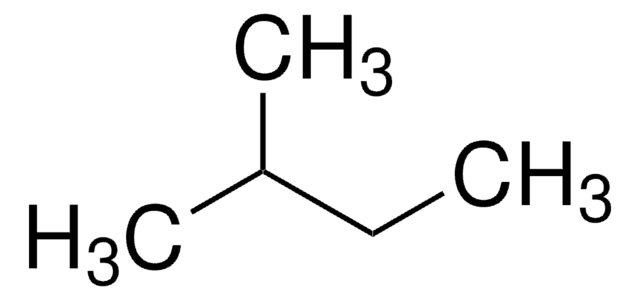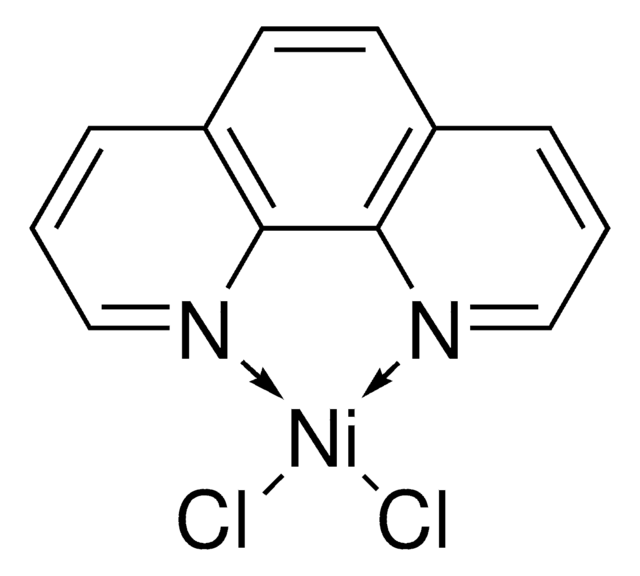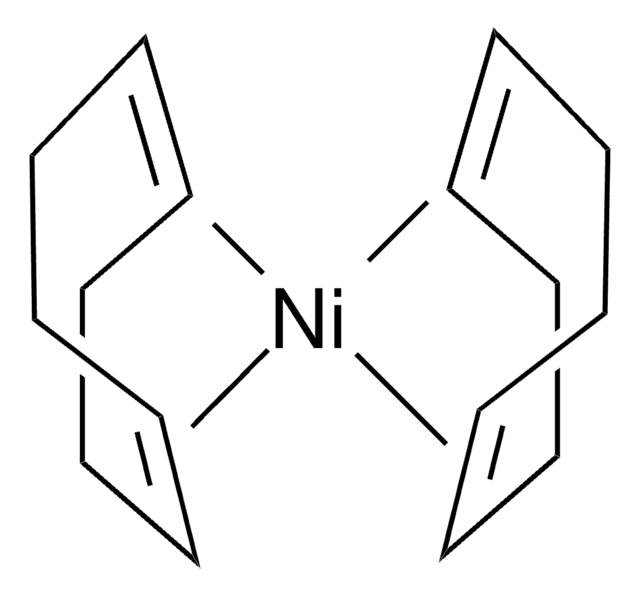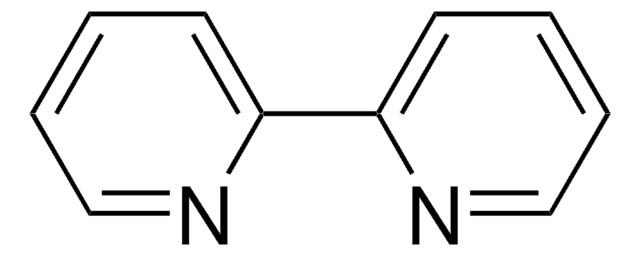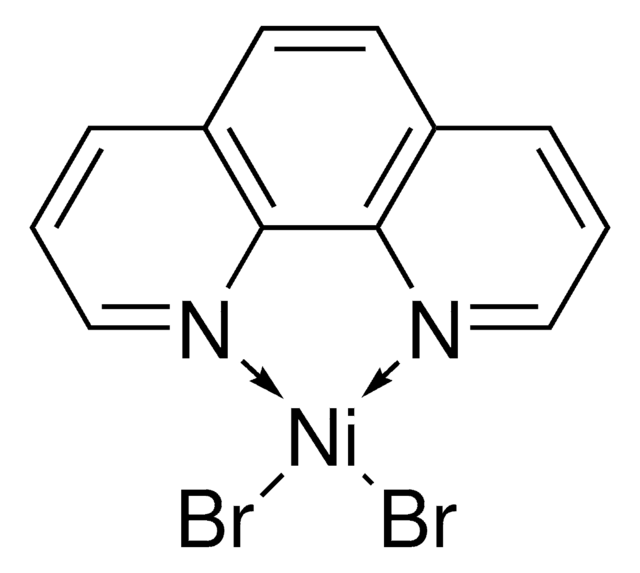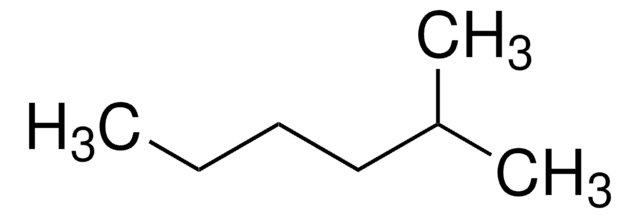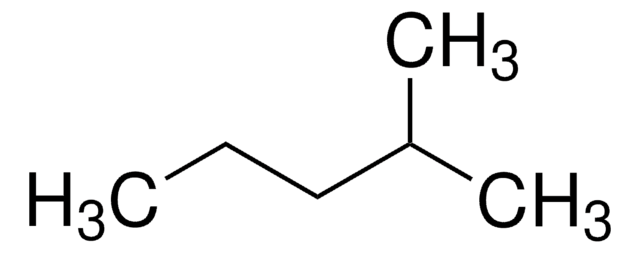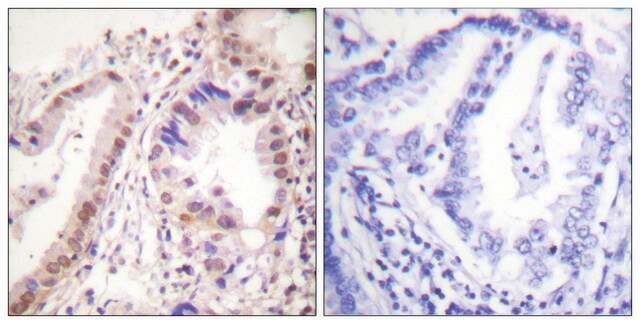M32631
2-Methylbutane
ReagentPlus®, ≥99%
Sinônimo(s):
Isopentane
About This Item
Produtos recomendados
grau
reagent
Nível de qualidade
densidade de vapor
2.6 (vs air)
pressão de vapor
11.17 psi ( 20 °C)
linha de produto
ReagentPlus®
Ensaio
≥99%
Formulário
liquid
temperatura de autoignição
788 °F
Lim. expl.
8.3 %
dilution
(for general lab use)
índice de refração
n20/D 1.354 (lit.)
p.e.
30 °C (lit.)
pf
-160 °C
densidade
0.62 g/mL at 25 °C (lit.)
temperatura de armazenamento
2-8°C
cadeia de caracteres SMILES
CCC(C)C
InChI
1S/C5H12/c1-4-5(2)3/h5H,4H2,1-3H3
chave InChI
QWTDNUCVQCZILF-UHFFFAOYSA-N
Procurando produtos similares? Visita Guia de comparação de produtos
Categorias relacionadas
Descrição geral
Aplicação
- A reactant to synthesize isoprene by a two-stage dehydrogenation process using chromia-alumina catalyst.
- A weakly polar solvent to study the intramolecular charge transfer (ICT) effect and the solvatochromic behavior of the pyrene substituted 1,3,4-oxadiazole derivatives.
Outras notas
Informações legais
Palavra indicadora
Danger
Frases de perigo
Declarações de precaução
Classificações de perigo
Aquatic Chronic 2 - Asp. Tox. 1 - Flam. Liq. 1 - STOT SE 3
Órgãos-alvo
Central nervous system
Perigos de suplementos
Código de classe de armazenamento
3 - Flammable liquids
Classe de risco de água (WGK)
WGK 2
Ponto de fulgor (°F)
-59.8 °F - closed cup
Ponto de fulgor (°C)
-51 °C - closed cup
Escolha uma das versões mais recentes:
Já possui este produto?
Encontre a documentação dos produtos que você adquiriu recentemente na biblioteca de documentos.
Os clientes também visualizaram
Nossa equipe de cientistas tem experiência em todas as áreas de pesquisa, incluindo Life Sciences, ciência de materiais, síntese química, cromatografia, química analítica e muitas outras.
Entre em contato com a assistência técnica